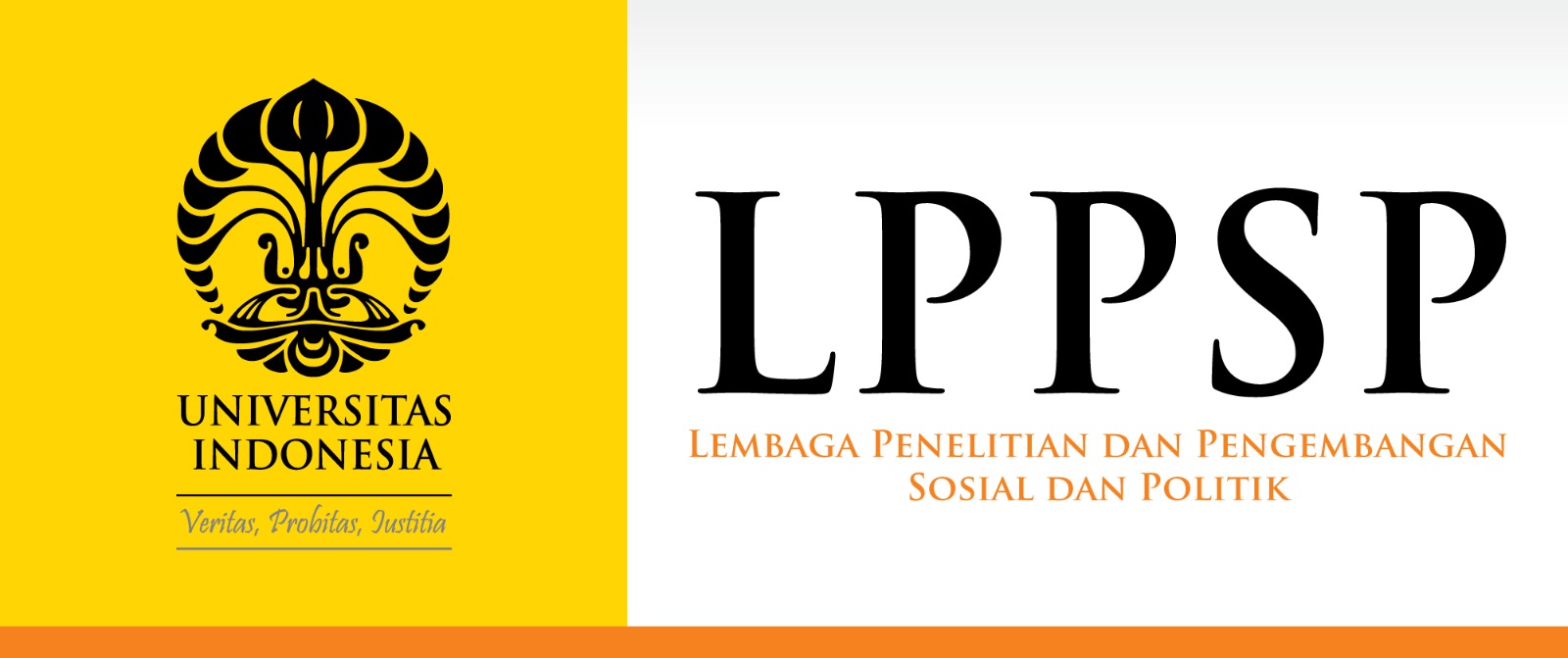JURNAL KOMUNIKASI INDONESIA
Abstract
The online petition is one of the latest forms of collective action as the Internet diminishes space, time and effort constraints. This technology also enables people to exercise citizenship that can, directly and indirectly, influence the policy-making processes. Yet, it is argued the action is a shallow and passive as citizens engaged to merely clicking and thoughtless that would undermine the essence of democracy. This study examines an individual’s action in signing an electronic petition that is perceived to be a rational and volitional behavior. Furthermore, the study also identifies the type of social influence that affects individuals’ intention to participate, the social identification. To sum up, an online petition is an active behavior, which personal constructs of planned action are commingled with an external structure of collective identity that enables a person to make an adequate judgment about political engagement. For future research, interrogating message elements as a medium of persuasion will disclose the effectivity of petition to arouse social-emotional attachment to compensate face-to-face communication and non-verbal cues.
References
Ajzen, I. (2012). Martin Fishbein’s Legacy the Reasoned Action Approach. The Annals of the American Academy of Political and Social Science, 640 (1), 11-27.
_______.(2011). The Theory of Planned Behavior: Reactions and Reflections. Psychology & Health, 26(9), 1113-1127
_______ (1991). The Theory of Planned Behavior. Organizational Behavior and Human Decision Processes, 50(2), 179-211.
_______ (1988). Attitudes, Personality, and Behavior. Milton Keynes: Open University Press.
_______ & Madden, T. J. (1986). Prediction of Goal-Directed Behavior: Attitudes, Intentions, and Perceived Behavioral Control. Journal of Experimental Social Psychology, 22(5), 453-474.
_______& M. Fishbein (1980). Understanding Attitudes and Predicting Social Behavior. New Jersey: Prenctice Hall, Inc.
Albarracin, D., Johnson, B. T., Fishbein, M., & Muellerleile, P. A. (2001). Theories of Reasoned Action and Planned Behavior as Models of Condom Use: a Meta-Analysis. Psychological Bulletin, 127(1), 142.
Anduiza, E., Cristancho, C., & Sabucedo, J. M. (2014). Mobilization through Online Social Networks: the Political Protest of the Indignados in Spain. Information, Communication & Society, 17(6), 750-764.
Armitage, C. J., & Conner, M. (2001). Efficacy of the Theory of Planned Behaviour: A Meta‐Analytic Review. British Journal of Social Psychology, 40(4), 471-499.
Bandura, A. (1986). Social Foundations of Thought and Action: A Social Cognitive Theory. . New Jersey: Prentice-Hall, Inc.
BBC (2007, February 10). Road petition breaks a million. BBC.com. Retrieved from http://news.bbc.co.uk/2/hi/uk_news/6349027.stm
Bennett, W. L., & Segerberg, A. (2012). The Logic of Connective Action: Digital Media and the Personalization of Contentious Politics. Information, Communication & Society, 15(5), 739-768.
Bennett, W. L., & Segerberg, A. (2013). The Logic of Connective Action: Digital Media and the Personalization of Contentious Politics. Cambridge: Cambridge University Press.
Bleakley, A., & Hennessy, M. (2012). The Quantitative Analysis of Reasoned Action Theory. The ANNALS of the American Academy of Political and Social Science, 640(1), 28–41.
Brunsting, S., & Postmes, T. (2002). Social Movement Participation in the Digital Age Predicting Offline and Online Collective Action. Small Group Research, 33(5), 525-554.
Chadwick, A. (2008). Web 2.0: New challenges for the Study of e-Democracy in an Era of Informational Exuberance. ISJLP, 5, 9.
Castells, M. (1999). Grassrooting the Space of Flows. Urban Geography, 20(4), 294-302.
_________. (2013). Networks of Outrage and Hope: Social Movements in the Internet Age. New York: John Wiley & Sons.
_________. (2000). Toward a Sociology of the Network Society. Contemporary Sociology, 693-699.
Coleman, S., & Blumler, J.G. (2011). The Wisdom of Which Crowd? On the Pathology of a Listening Government. The Political Quarterly, 82(3), 355-364.
Della Porta, D., & Mosca, L. (2005). Global-net for Global Movements? A Network of Networks for a Movement of Movements. Journal of Public Policy, 25(01), 165-190.
Diani, M. (1992). The Concept of Social Movement. The Sociological Review, 40(1), 1-25.
Dijkstra, T. K., & Henseler, J. (2015). Consistent Partial Least Squares Path Modeling. Management Information Systems Quarterly, 39(2), 297-316.
Fishbein, M., & Ajzen, I. (2010). Predicting and Changing Behavior: The Reasoned Action Approach. New York: Taylor & Francis.
Fligstein, N., & McAdam, D. (2011). Toward a General Theory of Strategic Action Fields. Sociological Theory, 29(1), 1-26.
Gidden, A. (1990). The Consequence of Modernity. In S. Appelrouth & L. D. Endles (eds), Sociological Theory in the Contemporary Era (pp.541-553). Thousand Oaks, CA: Pine Forge Press.
Gil de Zúñiga, H., Molyneux, L., & Zheng, P. (2014). Social Media, Political Expression, and Political Participation: Panel Analysis of Lagged and Concurrent Relationships. Journal of Communication, 64(4), 612-634.
Gonzales-Bailon, S. (2013). Online Social Networks and Bottom-up Politics. In Dutton, W.H. & Graham, M. (eds). Society and the Internet: How Information and Social Networks are Changing our Lives (pp.209-222). Oxford: Oxford University Press.
Granovetter, M. S. (1973). The Strength of Weak Ties. American Journal of Sociology, 78(6), 1360-1380.
Kelly, C., & Breinlinger, S. (1995). Identity and Injustice: Exploring Women's Participation in Collective Action. Journal of Community & Applied Social Psychology, 5(1), 41-57.
Klandermans, B. (1984). Mobilization and Participation: Social-Psychological Expansions of Resource Mobilization Theory. American Sociological Review, 49(5), 583-600.
_____________. (2004). The Demand and Supply of Participation: Social-Psychological Correlates of Participation in Social Movements. The Blackwell Companion to Social Movements (pp. 360-379). Blackwell Publishing. Blackwell Reference Online. 04 April 2015
Kraus, S. J. (1995). Attitudes and the Prediction of Behavior: A Meta-Analysis of the Empirical Literature. Personality and Social Psychology Bulletin, 21(1), 58-75.
Kraut, R., Patterson, M., Lundmark, V., Kiesler, S., Mukophadhyay, T., & Scherlis, W. (1998). Internet Paradox: A Social Technology that Reduces Social Involvement and Psychological Well-being?. American Psychologist, 53(9), 1017.
Lea, M., & Spears, R. (1991). Computer-Mediated Communication, De-individuation and Group Decision-Making. International Journal of Man-Machine Studies, 34(2), 283-301.
Lea, M., Spears, R., & de Groot, D. (2001). Knowing Me, Knowing You: Anonymity Effects on Social Identity Processes Within Groups. Personality and Social Psychology Bulletin, 27(5), 526-537.
Lee, J. K., Choi, J., Kim, C., & Kim, Y. (2014). Social Media, Network Heterogeneity, and Opinion Polarization. Journal of Communication, 64(4), 702-722.
Madden, T. J., Ellen, P. S., & Ajzen, I. (1992). A Comparison of the Theory of Planned Behavior and the Theory of Reasoned Action. Personality and Social Psychology Bulletin, 18(1), 3-9.
Margetts, H., Scott A.H., & Yaseri, T. (2014). Big Data and Collective Action. In Dutton, W.H. & Graham, M. (eds). Society and the Internet: How Information and Social Networks are Changing our Lives (pp.223-237). Oxford: Oxford University Press.
Morozov, E. (2009). The Brave New World of Slacktivism. Foreign Policy, 19(05) at http://neteffect.foreignpolicy.com/posts/2009/05/19/the_brave_new_world_of_slacktivism, accessed 03 November 2014.
McAdam, D., Tarrow, S., & Tilly, C. (1996). To Map Contentious Politics. Mobilization: An International Quarterly, 1(1), 17-34.
McCarthy, J. D., & Zald, M. N. (1977). Resource Mobilization and Social Movements: A Partial Theory. American Journal of Sociology, 1212-1241.
McEachan, R. R. C., Conner, M., Taylor, N. J., & Lawton, R. J. (2011). Prospective Prediction of Health-Related Behaviours with the Theory of Planned Behaviour: A Meta-Analysis. Health Psychology Review, 5(2), 97-144.
Morris, A. (2000). Reflections on Social Movement Theory: Criticisms and Proposals. Contemporary Sociology, 445-454.
Pariser, E. (2011). The filter Bubble: How the New Personalized web is Changing What We Read and How We Think. New York: Penguin.
Postmes, T., & Brunsting, S. (2002). Collective Action in the Age of the Internet Mass Communication and Online Mobilization. Social Science Computer Review, 20(3), 290-301.
_________, Spears, R., Sakhel, K., & Groot, D. D. (2001). Social Influence in Computer-Mediated Communication : The Effects of Anonymity on Group Behavior. Personality and Social Psychology Bulletin, 27, 1243–1254.
_________, & Spears, R. (1998). Deindividuation and Antinormative Behavior: A Meta-Analysis. Psychological Bulletin, 123(3), 238.
_________, Spears, R., & Lea, M. (1998). Breaching or Building Social Boundaries? SIDE-Effects of Computer-Mediated Communication. Communication Research, 25(6), 689-715.
Putnam, R. D. (2001). Bowling Alone: the Collapse and Revival of American Community. New York: Simon and Schuster.
Reicher, S. D., Spears, R., & Postmes, T. (1995). A Social Identity Model of Deindividuation Phenomena. European Review of Social Psychology, 6(1), 161–198.
Simon, B., Loewy, M., Stürmer, S., Weber, U., Freytag, P., Habig, C., & Spahlinger, P. (1998). Collective Identification and Social Movement Participation. Journal of Personality and Social psychology, 74(3), 646.
Segerberg, A., & Bennett, W. L. (2011). Social Media and the Organization of Collective Action: Using Twitter to Explore the Ecologies of Two Climate Change Protests. The Communication Review, 14(3), 197-215.
Spears, R., Lea, M., Corneliussen, R. A., Postmes, T., & Ter Haar, W. (2002). Computer-Mediated Communication as a Channel for Social Resistance the Strategic Side of SIDE. Small Group Research, 33 (5), 555-574.
Tarrow, S. (2005). The New Transnational Activism. Cambridge University Press.
________. (1994). Contentious Politics and Social Movement. In Tarrow, S. (ed). Power in Movement: Social Movements, Collective Action and Politics (pp. 10-25). Cambridge: Cambridge University Press.
Theocharis, Y., Lowe, W., van Deth, J. W., & García-Albacete, G. (2015). Using Twitter to Mobilize Protest Action: Online Mobilization Patterns and Action Repertoires in the Occupy Wall Street, Indignados, and Aganaktismenoi Movements. Information, Communication & Society, 18(2), 202-220.
Van Laer, J., & Van Aelst, P. (2010). Internet and Social Movement Action Repertoires: Opportunities and Limitations. Information, Communication & Society, 13(8), 1146-1171.
Van Zomeren, M., Postmes, T., & Spears, R. (2008). Toward an Integrative Social Identity Model of Collective Action: a Quantitative Research Synthesis of Three Socio-Psychological Perspectives. Psychological Bulletin, 134 (4), 504-535.
Varnali, K., & Gorgulu, V. (2015). A Social Influence Perspective on Expressive Political Participation in Twitter: the Case of# OccupyGezi. Information, Communication & Society, 18(1), 1-16.
Walther, J. B., Van Der Heide, B., Ramirez Jr, A., Burgoon, J. K., & Peña, J. (2015). Interpersonal and Hyperpersonal Dimensions of Computer-Mediated Communication. The Handbook of the Psychology of Communication Technology, 1-22.
Walther, J. B. (1996). Computer-Mediated Communication Impersonal, Interpersonal, and Hyperpersonal Interaction. Communication Research, 23(1), 3-43.
Westerman, D., Spence, P. R., & Van Der Heide, B. (2014). Social Media as Information Source: Recency of Updates and Credibility of Information. Journal of Computer-Mediated Communication, 19(2), 171–183.
Wojcieszak, M. (2011). When Deliberation Divides: Processes Underlying Mobilization to Collective Action. Communication Monographs, 78(3), 324-346.
Wright, S. (2012). Assessing (e-) Democratic Innovations: “Democratic Goods” and Downing Street e-Petitions. Journal of Information Technology & Politics, 9(4), 453-70.
Recommended Citation
Triwibowo, Whisnu
(2018)
"Understanding Online Political Participation: Theory of Planned Behavior and Social Identity Model of Deindividuation Effect To Predict Online Petition Behavior,"
JURNAL KOMUNIKASI INDONESIA: Vol. 7:
No.
1, Article 1.
DOI: 10.7454/jki.v7i1.9667
Available at:
https://scholarhub.ui.ac.id/jkmi/vol7/iss1/1
Included in
Gender, Race, Sexuality, and Ethnicity in Communication Commons, International and Intercultural Communication Commons, Social Influence and Political Communication Commons




